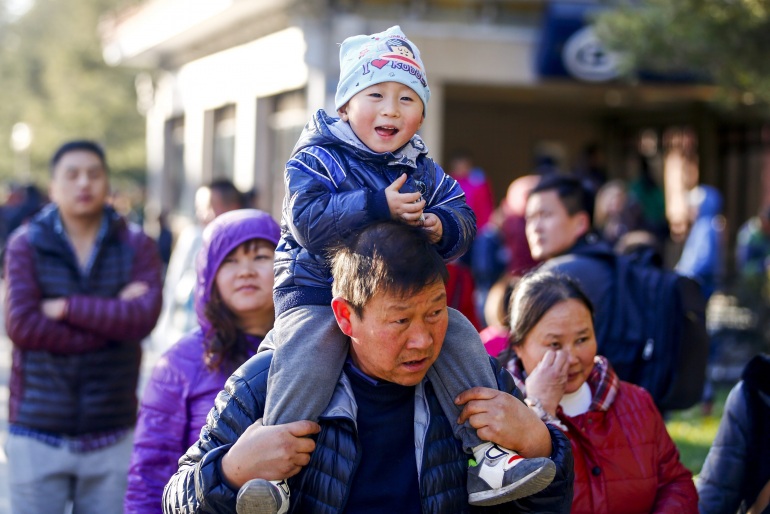China's two-child policy won't lift its demographic curse

A young boy rides on a man's shoulders near the Forbidden City in Beijing, China 16 November 2013 (AAPNewswire)
One of the most unthinkable things is happening in China: The world’s most populous country is about to run out of surplus labour. The wages of Chinese migrant workers increased 13.9 per cent in 2013. 11.8 per cent in 2012 and a whopping 21.2 per cent in 2011 (Is a labour shortage looming in China?, 21 February).
The rapid increases in wages strongly indicate that the country has either reached or is about to reach the so-called Lewis turning point, which means the country is about to run out of surplus labour as wages increase.
In response, Beijing has ended its three decade old ‘one-child’ policy to address the looming demographic challenge.
So just how bad is the problem?
China’s huge population of 1.3 billion people gives the false impression that the country has no problem with fertility rates. In fact, China’s has one of the lowest birth rates in the world. In 2012, the year of the dragon, a popular year for people to give birth, it was only 1.26.
In 2011, the birth rate was 1.04, and it was 1.18 the year before, according to data from the National Bureau of Statistics. The birth rate in China is less than half of the world’s average and significantly below the fertility replacement rate of 2.2 which the country needs just to maintain the current level of population.
Modelling shows that if the current birth rate persists, China’s population could shrink by as much as 29 per cent between 2030 and 2070 and the number of women of child bearing age could be halved. If this prediction comes to fruition, China will have a worse demographic crisis than Russia, which is a basket case of declining demographic fortune.
The sharply declining birth rate and working age population means there is a real possibility that the country is becoming grey before it becomes rich. By 2040, the world’s second largest population after India will have 400 million pensioners, according to Infosys founder Nandan Nilekani’s book Imagining India.
Is the end of the one-child policy too little and too late to address China’s demographic challenge? The preliminary evidence indicates the end of the one-child policy will not reverse the declining birth rate.
A population survey conducted by the Beijing Academy of Social Sciences after the government announced the end of the one-child policy, found that female Beijing residents of child-bearing age only wanted on average 1.3 children.
Less than one third of those surveyed indicated their desire to take advantage of Beijing’s new policy and surprisingly, only 53 per cent of migrant workers, who traditionally prefer to have larger families.
If the survey results from Beijing are indicative of the rest of China, this means the repudiation of the one-child policy will not have a significant impact on people’s desire to have more children. A rapid drop in birth rates across other East Asian countries, such as Japan, South Korea, Singapore and Taiwan also suggest China is likely to follow suit.
China’s demographic dividend, which combined a slow fertility rate with faster economic growth, is coming to an end. This will have serious consequences on the country’s labour force, productivity, social security system and economic growth.
One of the country’s foremost labour economists, Cai Fang, has warned “we should be psychologically and politically prepared for the situation.”













